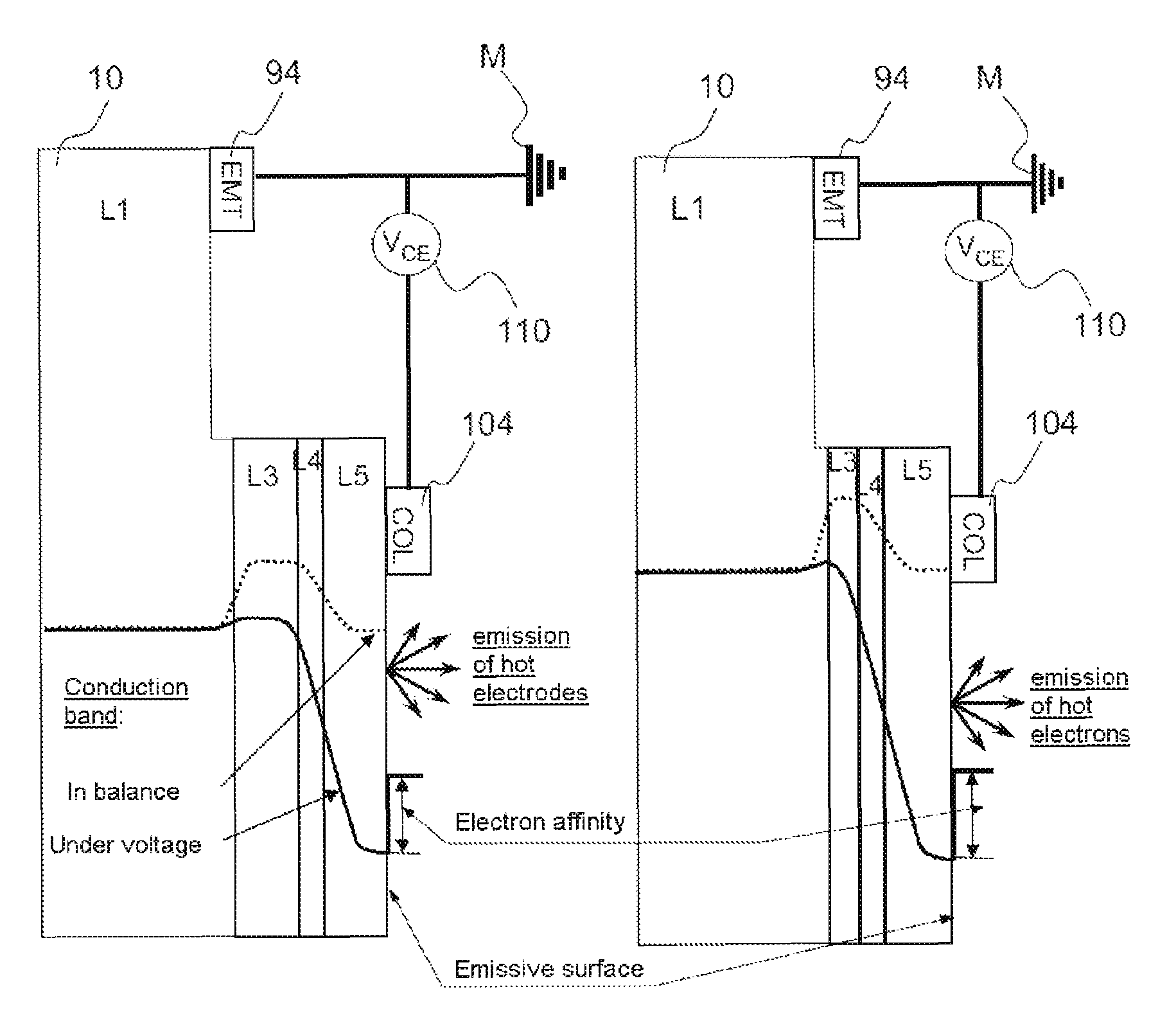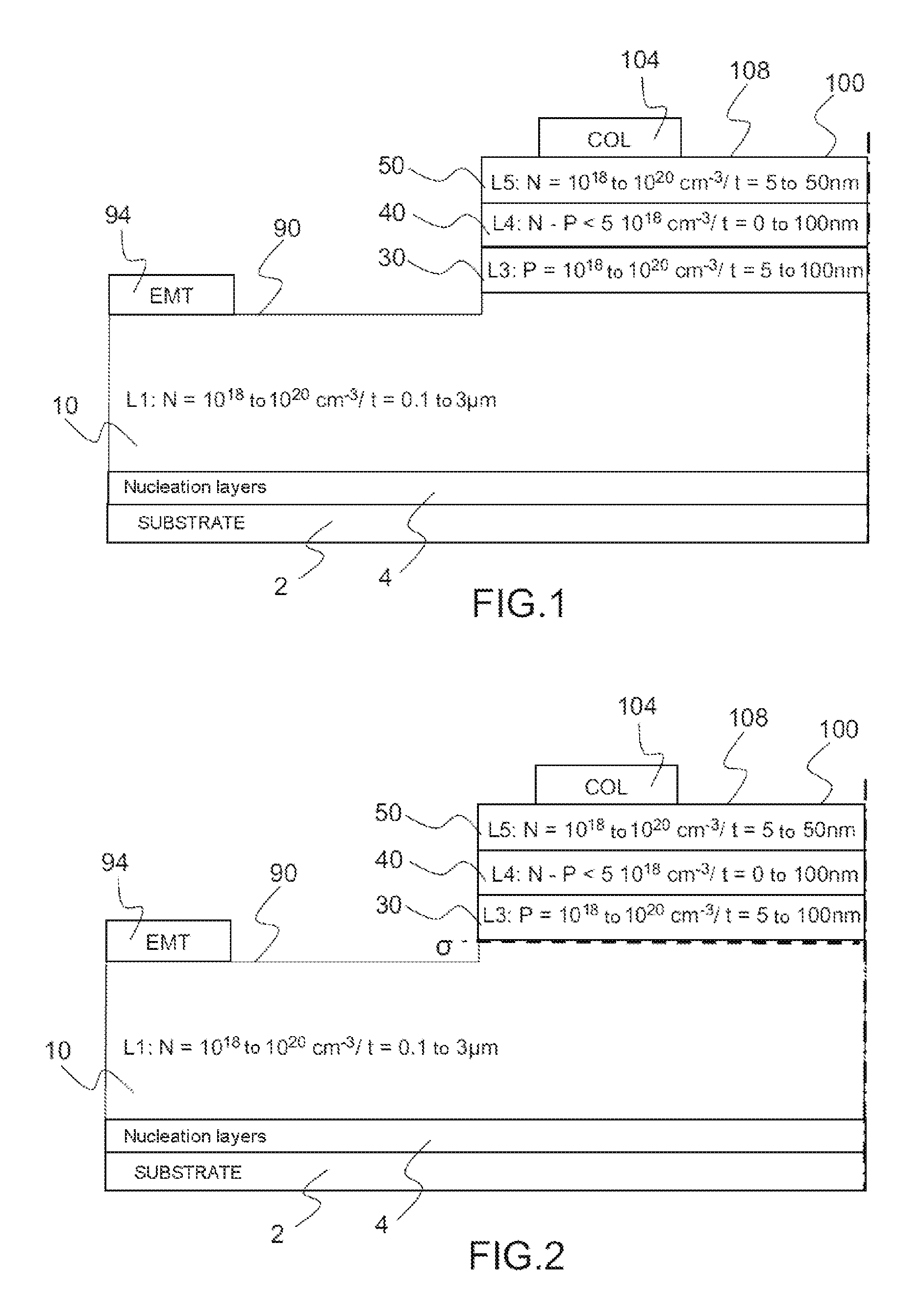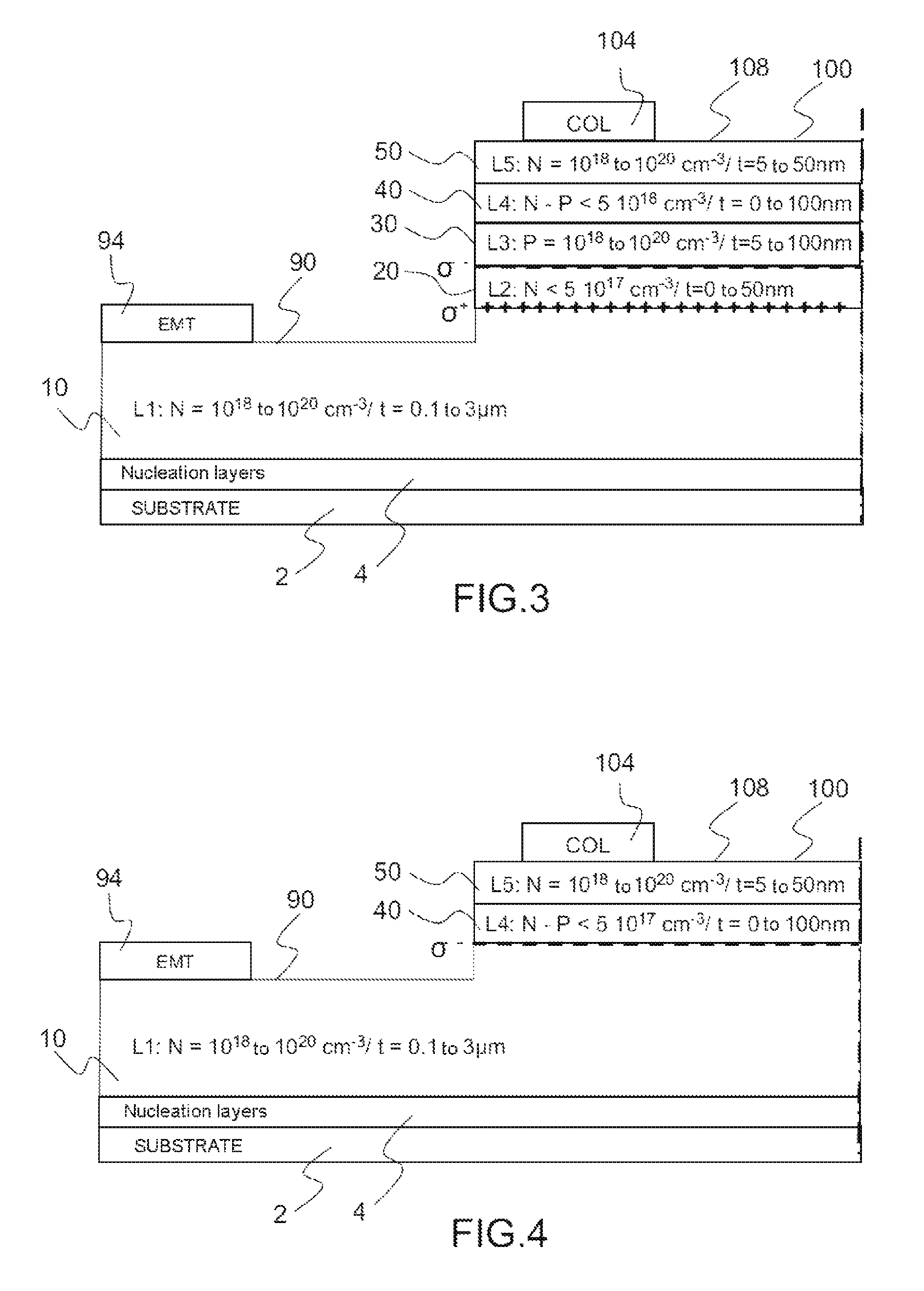Semiconductor device for electron emission in a vacuum
a semiconductor diode and electron emission technology, which is applied in the direction of transit-tube cathodes, discharge tubes/lamp details, electrical apparatus, etc., can solve the problems of inability to achieve stable electron emission, inability to produce, and difficulty in achieving the effect of reducing the number of electrons, and improving the distribution of current in the componen
- Summary
- Abstract
- Description
- Claims
- Application Information
AI Technical Summary
Benefits of technology
Problems solved by technology
Method used
Image
Examples
first embodiment
[0063]FIG. 1 shows a cross-sectional view of the electron emission device according to the invention.
[0064]In this first embodiment, a substrate (2) with nucleation layers (4) comprises a stack of semiconductor layers:[0065]a first layer L1 (10) of N type doped between 1018 cm−3 and 1020 cm−3 and of thickness t between 0.1 μm and 3 μm,[0066]on the first layer L1, a layer L3 (30) of P type doped between 1018 cm−3 and 1020 cm−3 and of thickness between 5 nm and 100 nm,[0067]on the layer L3, a layer L4 (40) having a doping of P or N type less than some 1018 cm−3 and of a thickness t between 0 nm and 100 nm,[0068]an output layer L5 (50) on top of the layer L4 of N type doped between 1018 cm−3 and 1020 cm−3 and of thickness between 5 nm and 50 nm.
[0069]The layers L3, L4 and L5 partially cover the layer L1 so as to leave a free surface (90) on this layer L1 for an emitter ohmic land EMT 94 intended to receive a reference potential, for example the potential of a ground M.
[0070]The output ...
second embodiment
[0072]FIG. 2 shows a cross-sectional view of the electron emission device according to the invention.
[0073]In this second embodiment, comprising the stack of layers L1, L3, L4, L5 of FIG. 1, a negative fixed charge (σ−) is obtained partly by doping of the layer L3 with impurities of acceptor type and partly by piezoelectric effect obtained at the interface between the layers L1 and L3 by a suitable choice of the chemical composition of said layers.
third embodiment
[0074]FIG. 3 shows a cross-sectional view of the electron emission device according to the invention.
[0075]In the embodiment presented in FIG. 3, a layer L2 is added to the stack presented in FIG. 1, having a doping of P or N type less than some 1017 cm−3 and of a thickness t less than 50 nm.
[0076]In this embodiment of FIG. 3, a negative charge σ− is obtained by piezoelectric effect at the interface between the P-doped layer L3 and the layer L2. The layer L2 exhibits a composition difference with the layer L1 such that a positive charge σ+ by piezoelectric effect appears in the interface between the layer L2 and the first layer L1. For example, the different materials of these layers L1 and L2 are chosen from the following chemical compounds:
InyAl1-yN, or AlxGa1-xN, or InxGa1-xN or (InyAl1-y)xGa1-xN
PUM
 Login to View More
Login to View More Abstract
Description
Claims
Application Information
 Login to View More
Login to View More - R&D
- Intellectual Property
- Life Sciences
- Materials
- Tech Scout
- Unparalleled Data Quality
- Higher Quality Content
- 60% Fewer Hallucinations
Browse by: Latest US Patents, China's latest patents, Technical Efficacy Thesaurus, Application Domain, Technology Topic, Popular Technical Reports.
© 2025 PatSnap. All rights reserved.Legal|Privacy policy|Modern Slavery Act Transparency Statement|Sitemap|About US| Contact US: help@patsnap.com



